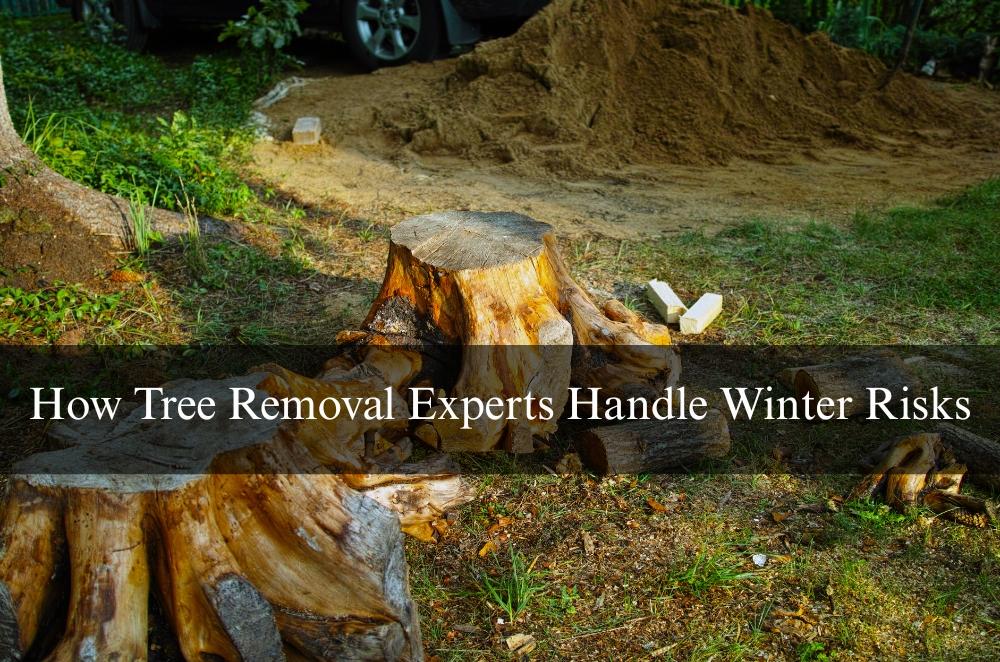Winter doesn’t always come with drama in Australia. No snowstorms for most of us. But trees? They still cop it. Wind gusts. Heavy rains. Sudden limb drops. This is the season when structural weaknesses tend to show themselves — and fast.
It’s why winter is one of the most strategic times to deal with trees that might be a problem. Not just for aesthetics, but safety. And the people who know this best? Tree removal experts who understand the warning signs, local council rules, and how to do the job without putting anyone at risk.
Why winter is the right time for removal
Tree removals often get postponed until something goes wrong — a branch crashes down or roots lift the driveway. But winter gives you a clean window to act before damage happens. The trees are less active. There’s minimal leaf coverage. And with cooler weather, arborists can safely use gear without overheating or disturbing active wildlife.
Plus, if you’re planning landscape changes for spring, now’s the time to get hazardous or overgrown trees sorted.
A few reasons why removals are smarter in winter:
-
Branches are easier to assess without foliage in the way
-
Soil tends to be more stable (less movement or sinkage)
-
Fewer nesting birds or possums to consider
-
Less impact on nearby plants during dormancy
And most importantly? No last-minute scrambling during storm season when bookings get tight.
The hidden risks winter reveals
Even healthy-looking trees can become unstable once the colder months hit. Moisture build-up, fungus, internal rot — these issues often show themselves when the weather cools and roots shift under soggy ground.
Keep an eye out for things like:
-
Sudden tilting or leaning after heavy rainfall
-
Cracks in the trunk or at major branch junctions
-
Mushrooms or fungal growth around the base
-
Bark peeling away without an obvious cause
-
Dead limbs that drop without wind or impact
These aren’t just signs of age. They could indicate real hazards — the kind that require immediate attention, especially in areas close to driveways, buildings, or high foot traffic.
What regulations apply when removing trees?
It’s not just a matter of firing up the chainsaw and going for it. In most built-up parts of Australia, there are rules. Proper ones. Even if the tree’s smack bang in the middle of your yard, you might still need permission to touch it.
Some species are protected no matter what. Others need a check by someone qualified before anything comes down. And what did your neighbour get away with last year? Doesn’t mean it applies to you. Local council tree removal rules can vary wildly — not just between states but even street to street.
The safer route? Getting someone licensed to look it over. They’ll know if it needs council approval or if it qualifies for an exemption, like when it’s leaning badly or already dropping limbs. Saves you the paperwork and a possible fine.
What a winter removal job usually looks like
Winter tree removals tend to be quicker and neater. With reduced canopy growth and fewer environmental factors to consider, arborists can get to the structure of the tree with less prep. The site is generally tidier, and clean-up is easier, especially on smaller residential blocks.
Here’s what typically happens:
-
The area is assessed for hazards, underground lines, or structure proximity
-
Permits are checked or arranged
-
Gear is brought in: ropes, harnesses, pole saws, sometimes a cherry picker
-
Sections are carefully cut and lowered — nothing is just dropped
-
The stump is either left (for later grinding) or removed the same day
Depending on size and complexity, it can be a two-hour job or take a full day.
When things get urgent
Of course, not every job comes with planning time. Sometimes storms come through, or you discover a split limb hanging low and ready to drop. That’s when you’re dealing with a real-time risk.
In these cases, knowing the emergency tree removal process matters. A qualified arborist should:
-
Secure the area (ropes, signs, visual markers)
-
Remove dangerous limbs first before tackling the trunk
-
Avoid damaging nearby fencing, roofs, or power lines
-
Notify the council or utility providers if access is limited
Emergency removals are more common in winter, especially after back-to-back rain events. Having a trusted expert on call before it becomes urgent? That’s peace of mind you can’t really put a price on.
How to tell when a tree’s time is up
Not every old tree needs to go. But some do. It’s not always about age — it’s about health, position, and long-term viability. And sometimes, it’s just about whether it’s creating more problems than it’s worth.
Curious what the red flags are? Here are a few:
-
Visible root damage or upheaval of nearby paths
-
Branches scraping gutters, roofs, or powerlines
-
Repeated pest infestations or disease
-
Bark wounds that never heal or keep spreading
-
A history of dropping limbs
Still unsure? You’re not alone. That’s why many homeowners look into the winter tree removal benefits — it helps confirm whether it’s the right time to act or wait it out.
Final thoughts
Tree removal isn’t just something you do when a branch crashes through the shed. It’s part of looking after the place, especially in winter. That’s when trees tend to give away their weaknesses.
Things crack, lean, or shift in the soil, and it’s easier to spot before everything bursts back to life in spring. No heat, no nesting birds, no mad rush to book someone in. Just a quieter moment to get on top of it.
And with someone who knows what they’re doing, it doesn’t have to be a hassle before something gives. Before a small crack in the root ball turns into a fallen mess across the driveway.



